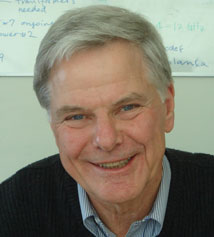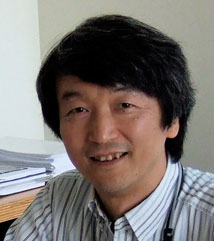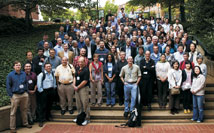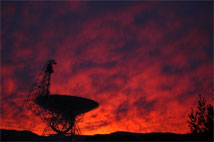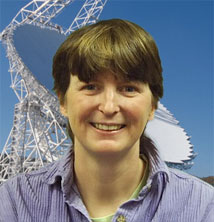NRAO eNews
October 2008 • Vol. 1, Iss. 5
- Upcoming NRAO Events
- ALMA Project News
- An ALMA Workshop on Massive Star Formation
- New Research Center Will Free Chemistry from Earth's Bonds
- GBT Dynamic Scheduling Beta Test Ends
- GBT Precision Telescope Control System (PTCS) Update
- NRAO Welcomes New Assistant Director for Green Bank Operations
 NRAO Lab Notebook: Imaging & Calibration Algorithm Research at the NRAO
NRAO Lab Notebook: Imaging & Calibration Algorithm Research at the NRAO- Career Opportunities
- Library
- Past Issues
- Contact the Editor
- Subscribe
- More Information
NRAO eNews: October 2008 • Volume 1, Issue 5

The Atacama Large Millimeter/submillimeter Array (ALMA) site in Chile. Photo by A. Beelen.
Upcoming NRAO Events
 2008 Jansky Lecture
2008 Jansky Lecture
Finding the Gas that Makes Galaxies | Art Wolfe (UCSD)
October 24, 2008 | 8:00 - 9:00 p.m. MDT
Socorro, NM
 The EVLA Vision: Galaxies through Cosmic Time
The EVLA Vision: Galaxies through Cosmic Time
December 16-18, 2008
Socorro, NM
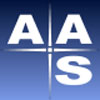 NRAO Town Hall & Reception
NRAO Town Hall & Reception
American Astronomical Society meeting
January 7, 2009 | 5:30 – 7:00 p.m. PST
Long Beach, CA |
Room to be determined
ALMA Project News
Al Wootten
ALMA Director, Project Manager, and
Deputy Project Manager Named
The ALMA Board has announced that Dr. Thijs de Graauw of the Netherlands has been appointed Director of the Atacama Large Millimeter/sub-millimeter Array (ALMA). Dr. de Graauw's appointment follows a search by an international committee.
Dr. de Graauw is a world expert in infrared and sub-millimeter astronomy. He has considerable experience in coordinating and leading large international scientific projects. In particular, he was the Principal Investigator of the successful Short Wavelength Spectrometer that flew on the Infrared Space Observatory (ISO) and is currently the Principal Investigator of the Heterodyne Instrument for the Far-Infrared (HIFI) on the Herschel Satellite which is to be launched in 2009.
Dr. de Graauw has been serving as Interim ALMA Director since April 1, 2008. Before joining ALMA, he was a professor at Leiden University. At the Netherlands Institute for Space Research (SRON), he was responsible for the infrared and sub-millimeter research program.
The ALMA Director has announced that Dr. Richard Kurz has been appointed Project Manager of the Atacama Large Millimeter/sub-millimeter Array (ALMA) in the Joint ALMA Observatory (JAO) effective November 1, 2008. Dr. Kurz's appointment follows a search by an international committee.
Dr. Kurz has extensive management experience in space and astronomical projects. He has been serving as Interim European Project Manager since February 2008. From 1999 to 2004, Dr. Kurz was ALMA European Project Manager at the European Organisation for Astronomical Research in the Southern Hemisphere (ESO) in Germany. At ESO, he organized the European side of the ALMA collaboration. Dr. Kurz was Project Manager of the Gemini 8-Meter Telescopes and, before that, managed a variety of NASA and Department of Defense space programs while at TRW Space and Defense and NASA.
Dr. Kurz holds a Ph.D. in Physics from the University of California at Berkeley. He has published many scientific and technical papers on high-energy elementary particle physics and presented ALMA at international conferences throughout the last decade.
Additionally. Dr. Tetsuo Hasegawa has been appointed Deputy JAO Project Manager of the Atacama Large Millimeter/submillimeter Array (ALMA) effective November 1, 2008. Dr. Hasegawa's appointment follows a search by an international committee.
Dr. Hasegawa has considerable experience in management of astronomical projects, as well as a distinguished academic career. He has been serving as JAO Interim Project Manager since May 2008. Before coming to Chile, Dr. Hasegawa was JAO Project Director and Project Manager at the National Astronomical Observatory of Japan. Dr. Hasegawa holds a Ph.D. in Science from the University of Tokyo, where he taught at the Institute of Astronomy (1988-2000) and Nobeyama Radio Observatory (1980-1988). He specialized in interstellar medium physics and has published extensively on this and other topics.
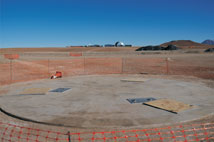
Figure 1. A concrete AOS antenna foundation cures. Cerro Chico is in the right foreground. Photo by Patricio Pardo.
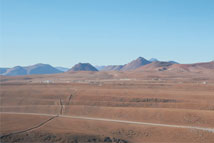
Figure 2. The view toward the array center from Cerro Chico. The Technical Buildings are to the left; the Cosmic Background Imager facility is to the right. Photo by A. Beelen.
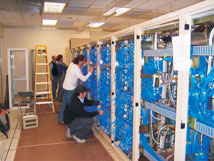
Figure 3. One thousand three hundred cables have been installed in the first correlator quadrant in its oxygenated AOS technical building home. Automated software detected two interchanged cables, which were quickly corrected.
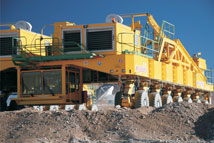
Figure 4. One of two massive ALMA transporters undergoes tests at the 16,500 foot Array Operations Site. The APEX antenna, which is similar to the Vertex prototype antenna, can be seen through the undercarriage. Photo by A. Beelen.

Figure 5. Raster scanned images of the Moon were made with the prototype antennas and imaged with CASA software: Vertex antenna image (right), Alcatel antenna image (left). Emission is entirely thermal, probing the temperature just below the surface; there is some thermal lag. For these reasons, the Moon's millimeter-wave appearance is quite different from its appearance at optical wavelengths. The Moon phase was a few days from first quarter.
Construction at the Array Operations Site (AOS)
Concrete has been received and poured for twenty-five antenna foundations at the 16,500 foot altitude AOS. This number will nearly double by the end of the year.
The first quadrant of the bilateral correlator, which can serve 32 antenna stations, is being wired for duty at the AOS Technical Building. Thirteen hundred cables have been installed and tested in the oxygenated correlator room of the building. Tests continue on schedule. In Charlottesville, the second quadrant is being used for testing while the third quadrant is being assembled.
Construction at the Operations Support Facility (OSF)
Elements of the Calibration Device were installed on the Front End and tested as the first receiver package was readied for installation on the Mitsubishi Electric Company antenna No 2, which is undergoing acceptance testing. Operation of elements of the ALMA Back End, installed on that antenna, was demonstrated from the temporary integration facility. Acceptance tests, pointing in particular, were carried out on the first two Vertex antennas. The first of these is progressing through its acceptance tests. Elements of the seventh Vertex antenna arrived at the OSF, bringing the number of antennas on site to eleven. An area is being prepared for the European antenna, elements of which should be shipped before the end of the year.
Activities at the ALMA Test Facility
The ALMA Test Facility underwent a maintenance period during September. Software testing will resume in October. During August, interferometric monitoring of calibrator fluxes was demonstrated, including reduction of the data, with good results. The first tests of the production antennas in Chile will be as single entities; a program of single antenna testing concluded with a demonstration of planet tracking and raster imaging. Raster scans of the moon were made with each of the two antennas, then the data were massaged into images with the CASA software (Figure 5).
ALMA Simulations Workshop
About two dozen astronomers gathered September 8 - 10 in Grenoble for discussions about ALMA simulations, sharing experiences, ideas, and algorithms. Simulation of ALMA science targets illustrated the power of ALMA in a number of scientific fields, from debris disks to distant galaxies. Interactions at the meeting are expected to hone simulations to guide development of calibration strategies, observing modes and other elements for optimization of observing with ALMA.
An ALMA Workshop on Massive Star Formation
Remy Indebetouw
NRAO and the University of Virginia Astronomy Department hosted the third annual NAASC Workshop on Transformational Science with ALMA, September 25-27 at the Omni Hotel in Charlottesville. The meeting, entitled “The Birth and Feedback of Massive Stars Within and Beyond the Galaxy,” drew record interest from the international scientific community and filled the 150-person venue to capacity. The Scientific Organizing Committee (SOC) was co-chaired by Andrew Baker (Rutgers) and Remy Indebetouw (NRAO/UVa) and included NRAO staff members Crystal Brogan and Al Wootten, and UVa faculty member Kelsey Johnson. Thanks to their efforts, those of the Local Organizing Committee (led by John Hibbard and Laurie Clark), and on-site help from NRAO’s Charlottesville IT staff, the meeting was a great success.
The SOC developed a broad program exploring massive star formation from high-resolution views of individual cores in our Galaxy to galaxy-wide scaling laws in the local Universe. The scientific scope also included the feedback effects of massive stars on their natal cores, clouds, and entire host galaxies.
Many critical issues related to using ALMA to study star formation were explored. The first day’s discussion covered such practical issues as astrochemistry, line identification, modeling, and analysis of the many molecular tracers accessible to ALMA. One transformational capability of ALMA that was highlighted was the ability to resolve individual massive protostellar cores while simultaneously having the sensitivity at large spatial scales to determine the physical conditions in the envelopes and clumps surrounding those cores. Such observations promise much improved constraints on the microphysics of massive star formation. ALMA’s impact may be even more revolutionary in nearby galaxies by providing sub-GMC scale diagnostics of dense gas throughout the local universe. The meeting explored recent progress being made in dissecting the physics behind the scaling laws relating dense or total gas density to star formation rate – observationally using multi-wavelength surveys of local galaxies and theoretically by incorporating improved molecular gas physics in large-scale simulations. Theoretical and observational talks discussed how protostellar and massive stellar feedback drives outflows, turbulence and triggers further star formation, and again the improved understanding with ALMA of these processes was highlighted. Finally, massive stellar feedback was connected to the largest scales in the evolution of entire complexes and driving of galactic outflows. Slides of presentations and posters are available at the meeting web site: http://www.cv.nrao.edu/php/meetings/massive08/.
The participants included a core of millimeter and molecular cloud experts as well as important viewpoints from other wavelengths, promoting stimulating discussions between the Galactic and extragalactic communities and between long-wavelength and multi-wavelength perspectives.
Meeting participants enjoyed a first-hand look under the hood of ALMA in a stimulating tour given by engineers at the North American ALMA Front-End Integration Center, located at the NRAO Technology Center, preceded and followed by a reception hosted by the NRAO Director’s Office.
New Research Center Will Free Chemistry
from Earth's Bonds
Dave Finley
The NRAO is a partner in a new research center that will combine the tools of chemistry and astronomy to use the unique laboratory of interstellar space to free the study of basic chemistry from the restrictive bonds of Earth.
The Center for Chemistry of the Universe will allow scientists to explore new types of chemical reactions that occur under the extreme conditions of space. The center will combine laboratory experiments, theoretical studies, and radio-telescope observations to dramatically expand our understanding of the processes that build molecules that may "seed" young planets with the building blocks of life.
The Center, directed by Brooks Pate, Professor of Chemistry at the University of Virginia, forges a unique research collaboration among leading scientists in the field of astrochemistry from the University of Arizona, The Ohio State University, the Harvard-Smithsonian Center for Astrophysics, the National Institute of Standards and Technology, the National Radio Astronomy Observatory, and a group of chemists and physicists at the University of Virginia (UVa) engaged in research to understand the fundamentals of chemical reactions.
The team received an initial grant of $1.5 million from the National Science Foundation (NSF) to form the center during the next two years. If the NSF then fully approves the initiative, the foundation will provide funding of $4 million per year for up to ten years.
The new center will bring together laboratory researchers, theoreticians, and observers using radio telescopes of the NRAO and the Arizona Radio Observatory (ARO). The group of chemists participating in the center have discovered more than half of the new interstellar molecules identified worldwide in the past 18 months.
A central theme of chemistry is to understand how chemical reactions work. Most of our current knowledge of how molecules are formed came from laboratory experiments with solutions. However, in interstellar space, reactions occur in gases and on surfaces, such as on tiny cosmic dust grains. The new center will focus on studying these poorly understood processes, and thus break chemistry out of its Earth-bound constraints.
The new center also will pursue an extensive educational effort, including student programs, new courses at UVa, and displays and outreach activities at the NRAO's Green Bank Science Center and other museums.
GBT Dynamic Scheduling Beta Test Ends
Karen O'Neil
September 30 marked the end of the summer test period for the beta version of the Green Bank Telescope’s new Dynamic Scheduling System (DSS). The DSS test period was designed to allow the Green Bank team to test both the software and the policies planned for the final GBT dynamic scheduling system which is planned to be released in 2009. The summer tests were extremely fruitful, giving the team a chance to try new software technologies as well as refine the algorithms and policies behind the new DSS. In addition, the GBT was able for the first time to schedule experiments through 48 GHz during the summer months, showing off the system’s flexibility to adapt to changing weather patterns.
At the end of the tests we surveyed all DSS users for their opinions on the beta release. These results will be combined with the outcome of the tests to build a plan forward for the DSS that will be presented to an external review committee in early December. The team will then begin the process of redesigning and rebuilding the DSS with an eye on switching over to the DSS for all GBT telescope scheduling during the 2009 calendar year.
We have received a number of requests from GBT observers to continue the DSS after the end of the summer tests. However, the results of the tests have shown us that the software, algorithms, and policies need considerable refinement before they will be ready for a final release, and we lack the staff to be able to both make these changes and keep the beta version running on the telescope. As a result, we did turn off the DSS on September 30 and will not restart it until the next version is complete. The team will continue working in the meantime to insure that the final product meets the needs of all GBT observers while still attaining the goals laid out for the project.
Further information on the GBT DSS is online at http://www.gbt.nrao.edu/dss.
GBT Precision Telescope Control System (PTCS) Update
Todd Hunter & Melinda Mello
During the summer GBT maintenance season, engineers performed a comprehensive service effort on the active surface hardware. Repairs were performed on a number of actuators with broken cables, unstable LVDT modules, and other maladies. At the same time, the scientific team reviewed the past measurements of how the surface deforms on large scales in response to daytime thermal changes. Out-of-focus (OOF) holography maps taken throughout a clear winter day indicate that although surface deformations become significant whenever the Sun is above ~ 10 degrees elevation, they change slowly while tracking a single source. This led the team to implement a new feature in the active surface software manager that allows an additional set of Zernike terms to be added to the existing elevation-dependent gravitational terms that have been in place for high-frequency observers since late 2006. With this component available, the team then developed an initial, staff-operable version of the OOF technique that allows the surface deformations to be measured and quickly corrected. The end-to-end functionality was tested on the sky at Q-Band during a sunny afternoon. The telescope beam profiles on a bright quasar changed from asymmetric to Gaussian, the peak antenna temperature increased, and two obvious sidelobes were eliminated. Thus, this technique has the potential to bring the daytime GBT aperture efficiency at high frequencies closer to its nighttime level.
An observer tool called “AutoOOF” is in final testing and is expected to be available to observers in a shared-risk mode this winter to further explore the effectiveness of the technique. AutoOOF is an Astrid procedure (i.e. similar to AutoPeakFocus) that acquires a quick set of in-focus and out-of-focus on-the-fly continuum maps on a quasar using the currently active receiver (Q or Ka-band). It then automatically launches the analysis software developed by Bojan Nikolic, a former Green Bank scientist who continues to collaborate with the PTCS group. This software produces a set of fits to the current surface deformation. The fits are described by Zernike terms (the so-called "thermal" terms) and are displayed in Astrid as surface images. The default correction is sixth order; however, the Astrid OOF plug-in allows the cautious observer to examine and compare the surface images that result from both a fewer and greater number of terms before choosing which to send to the active surface. The total time to run the procedure and apply the corrections is about 20 minutes. Because surface deformation becomes ever more important at higher frequencies, additional research continues on the initial Mustang OOF maps obtained last spring. The use of multi-pixel Mustang maps has the potential to significantly speed up the process of measuring and correcting the surface during 90 GHz observations.
Watch for other PTCS project news in the coming months.
NRAO Welcomes New Assistant Director for
Green Bank Operations
Fred K.Y. Lo & Phil Jewell
We are pleased to announce that Karen O'Neil has been named the new Assistant Director for Green Bank Operations, effective October 1, 2008. Karen has done an outstanding job as the Interim Assistant Director for Green Bank since May 2008, when she stepped in following the departure of Richard Prestage. Before that, Karen served as the Head of Program Development for Green Bank Operations. In that capacity, Karen was responsible for coordinating the development program for the GBT, which presently includes the Precision Telescope Control Project for developing the high frequency capability of the GBT, the MUSTANG bolometer camera, the K band (1.3 cm) Focal Plane Array, the GUPPI Pulsar Backend, and the Dynamic Scheduling Project. Karen is also the Project Manager and Project Scientist for the Dynamic Scheduling project, which has just finished a successful test run over the summer. Karen has served in several previous capacities in Green Bank, including the GBT Spectrometer instrument scientist. Before coming to Green Bank, Karen was a scientist at the Arecibo Observatory. She received her Ph.D. in Physics at the University of Oregon.
The GBT will have tremendous opportunities over the next few years to expand its scientific capabilities. The development of focal plane array cameras has been identified as the top priority for the GBT – and an Observatory priority -- and offers the potential of increasing the observing speed of the GBT by factors of 10 to 1000. We are confident that Karen's leadership and the skill and hard work of the staff can make this a reality.
Please join us in congratulating Karen on her appointment.
NRAO Lab Notebook: Imaging & Calibration Algorithm Research at the NRAO
Sanjay Bhatnagar

Next generation radio telescopes under construction at NRAO and elsewhere in the world promise at least a ten-fold increase in the achievable sensitivity. Some of the research on imaging and calibration algorithms at NRAO in the past several years has been focused on solving the problem of correcting instrumental and atmospheric effects that vary across the telescope field of view. Unless corrected, these effects are believed to limit the achievable imaging dynamic range of the next generation interferometric radio telescopes. The large numbers of antennas, high data rates, wide fields-of-view (FoV) and high desired dynamic ranges of EVLA and ALMA make it impractical to merely apply old imaging algorithms to reach the scientific goals enabled by the telescope hardware. In the future, the enormous increases in the FoV and number of antennas for the Square Kilometre Array (SKA) make it imperative that we begin to solve these imaging problems now, so that the EVLA/ALMA solutions may be used for guidance in attacking the SKA imaging problem. Our research has lead to the development of a new paradigm and a number of new imaging and calibration algorithms that show promising performance.
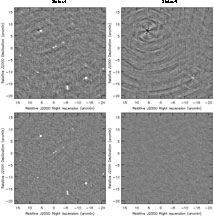
Figure 1.The top row shows the full beam Stokes-I and -V image of a field containing two 4C sources located at 75% and 35% response levels of the VLA L-Band beam. No circular polarization signal is expected from this field and all of the power seen in the Stokes-V image is due to instrumental effects. The bottom row shows images made using the new AWProjection algorithm that corrects for the rotation of azimuthally asymmetric antenna beams during image deconvolution. The Stokes-V image is noise-limited, featureless, and corresponds to a dynamic range improvement of a factor of ten. Effects of azimuthal asymmetry of the antenna beams are reduced in the Stokes-I image as well.
Instrumental and atmospheric/ionospheric effects generally result in gains that vary with time and across the FoV. While gains that are constant across the FoV may be corrected independent of imaging, correction for direction dependent (DD) effects is difficult and cannot be separated from imaging. Conventional algorithms therefore have been designed to correct only for direction independent effects. Geometric effects which vary across the field of view (W-term), time-varying antenna primary beams (due to rotation of the antenna beam for El-Az mounted antennas, pointing errors, geometrical/gravitational deformations, etc.), and effects of atmospheric/ionospheric gain variations across the FoV are examples of some of the DD effects which will affect EVLA, ALMA and SKA-class telescopes. The combination of higher data rates and computing requirements drives the data processing cost for these next generation telescopes quite high. Therefore, not only is it important to develop new calibration and imaging algorithms to correct for DD effects, it is also important to ensure that the algorithms are computationally efficient and scale well in a parallel computing environment.
Direction dependent effects are fundamentally more complicated to handle than direction independent effects. Until recently, e.g., most attempts to correct for direction-dependent gains due to non-circular antenna beams used direct evaluation of the Fourier integral and were prohibitively slow. In the past few years, we have developed FFT-based fast algorithms to correct for a number of otherwise difficult to correct DD effects that will affect next-generation NRAO telescopes. The WProjection algorithm corrects for the effects of non-coplanar baselines during imaging (Cornwell, Golap and Bhatnagar, EVLA Memo 67, 2003; Special Issue of IEEE JSTSP, Special Issue on Signal Proc. for Astronomical and Space Research Applications, in press). This algorithm is available in the CASA package and has been demonstrated to be faster by a factor of at least ten compared to the conventional image-facet based algorithm. When imaging crowded fields or fields with significant extended emissions, the WProjection algorithm has the added advantage of not splitting the emission across multiple image facets.
Using a model for the antenna aperture function, we also developed an iterative image deconvolution algorithm to correct for the time varying gains of the antenna primary beam that are due to antenna pointing errors and rotation of the primary beam with parallactic angle (Bhatnagar, Cornwell and Golap,EVLA Memo 100, 2006; Bhatnagar, Cornwell, Golap and Uson, A&A 487, 419-429,2008). This algorithm is also available in the CASA package. Full-Stokes, full-beam imaging with the VLA is severely affected by DD time-varying gains due to polarization squint of VLA antennas and rotation of azimuthally asymmetric power pattern with parallactic angle. We used this algorithm for VLA L-Band imaging to demonstrate full-beam Stokes-I and Stokes-V noise-limited imaging capability with an imaging dynamic range improvement of at least an order of magnitude.
Work for accurate measurement of the full-Stokes EVLA antenna power pattern and full-Stokes imaging is in progress. The effects of expected EVLA antenna pointing errors and a pointing selfcal algorithm to efficiently solve for antenna pointing errors has also been developed (Bhatnagar, Cornwell and Golap, EVLA Memo 84, 2004). Work for the implementation and testing of this algorithm for the EVLA and ultimately for mosaicking with ALMA is in progress and in an advanced stage. Work on imaging with wide observing bandwidths and scale-sensitive deconvolution methods for high dynamic range imaging is also in advanced stage. Progress in these and other areas of algorithms research will be reported in future articles.
Career Opportunities
2009 Jansky Fellowship Program
The National Radio Astronomy Observatory (NRAO) announces the 2009 Jansky Fellowship postdoctoral program that provides outstanding opportunities for research in astronomy. Jansky Fellows formulate and carry out investigations either independently or in collaboration with others within the wide framework of interests of the Observatory. Prior radio experience is not required and multi-wavelength projects leading to a synergy with NRAO instruments are encouraged. The NRAO also encourages applications from candidates with interest in radio astronomy instrumentation, computation, and theory.
Up to three appointments will be made for positions at any of the NRAO sites (Socorro, NM; Green Bank, WV; and Charlottesville, VA). In the coming years, as ALMA commissioning activities get underway, we plan on positions being available in Chile. Jansky Fellows are encouraged to spend time at universities working with collaborators during the course of their fellowship. In addition to appointments at NRAO sites, up to three non-resident Jansky Fellowship appointments will be offered for positions that may be located at a U.S. university. Frequent and/or long term visits to NRAO sites are encouraged. Split Fellowships with time spent at NRAO and at a U.S. university are allowed.
The starting salary will be $58,000 per year with an appointment duration of two years and possible renewal for a third year. A research budget of up to $10,000 per year is provided for travel and computing requirements. Fellows are eligible for page charge support, vacation accrual, health insurance coverage, and a moving allowance. In addition, up to $3,000 per year is provided to the host institution to defray local institutional costs for Jansky Fellows resident at non-NRAO sites.
The NRAO web site provides a description of the application process and other relevant details: http://www.nrao.edu/admin/do/jansky-postdocs.shtml. Candidates must receive their PhD prior to beginning a Jansky Fellowship appointment.
The deadline for both applications and letters of recommendation is Monday, November 17, 2008. The NRAO is an equal opportunity employer - women and minorities are encouraged to apply (M/F/H/V).
Award offers will be made by February 15, 2009, with the Fellowships expected to begin in September 2009.
NRAO Tenure Track Astronomer
The National Radio Astronomy Observatory (NRAO) has an opening for a tenure track astronomer position. The highest priority of the Observatory is to recruit new scientific staff that will enhance the scientific use and development of our new flagship facilities ALMA and EVLA. This year's search will focus on the scientific areas of astro-chemistry, proto-planetary disks, exo-planets, large-scale structure and time-domain astronomy, with technical expertise in millimeter and sub-millimeter spectroscopy, interferometric data analysis (including pipelines, data mining, high performance computing and algorithms). Preference will be given to applicants in these areas, although exceptional candidates with expertise in other areas will also be considered.
The NRAO currently operates the Very Long Baseline Array (VLBA), the 100-m Robert C. Byrd Green Bank Telescope (GBT), and the Very Large Array. It is also the North American lead in the construction of the Atacama Large Millimeter/submillimeter Array (ALMA), and is building the Expanded Very Large Array (EVLA). The completion of the EVLA and ALMA early in the next decade represents a one to two order of magnitude improvement in observational capabilities at centimeter through submillimeter wavelengths. Both facilities will be revolutionary in addressing a broad range of fundamental problems in astrophysics. Looking farther beyond, NRAO is increasingly involved in the planning of the next generation cm/m-wave facilities in the Square Kilometer Array (SKA) program.
The NRAO web site provides a description of the application process and other relevant details: http://www.nrao.edu/admin/do/tenuretrack.shtml
The deadline for applications and letters of recommendation is Monday, December 22, 2008.
The NRAO is an Equal Employment Opportunity Employer - women and minorities are encouraged to apply.
NAASC Scientist - CASA Scientific Software Developer: The North American ALMA Science Center (the NAASC) has an opening for a scientist to work on the development of the new ALMA data reduction and analysis package CASA (Common Astronomy Software Applications).
NAASC Scientist - Commissioning Liaison: The North American ALMA Science Center (the NAASC) has an opening for a scientist to work, during commissioning and verification, as a liaison between the NAASC, which is headquartered at the NRAO headquarters in Charlottesville, VA and the ALMA telescope at its high site in northern Chile.
NAASC Postdoctoral Fellow - Splatalogue: The North American ALMA Science Center (NAASC) located at NRAO headquarters in Charlottesville, VA (on the campus of the University of Virginia) invites applications for a postdoctoral fellow to work with the NAASC scientific staff as it gears up to support the needs of the community when ALMA early science begins in 2011. This position is aimed primarily at independent research, but with an emphasis on exercising ALMA end-to-end software and databases from a scientific perspective.
NAASC Postdoctoral Fellow - CASA: The North American ALMA Science Center (NAASC) located at NRAO headquarters in Charlottesville, VA (on the campus of the University of Virginia) invites applications for a postdoctoral fellow to work with the NAASC scientific staff as it gears up to support the needs of the community when ALMA early science begins in 2011. This position is aimed primarily at independent research, but with an emphasis on exercising ALMA end-user software from a scientific perspective.
ALMA Commissioning Scientists: The Joint ALMA office is seeking commissioning scientists to assist the Project Scientist and Deputy Project Scientist in planning and executing the scientific commissioning of ALMA. The successful applicants will be expected and encouraged to continue an active program of independent research.
Library
Marsha Bishop
The NRAO Library has opened NRAOPapers for the public. This database has full citations and information on NRAO telescopes, NRAO proposal numbers plus other information of interest. In addition, NRAOPapers links to ADS for records having an ADS entry. Please check out NRAOPapers at: https://safe.nrao.edu/php/library/search.shtml
We encourage feedback, questions or comments on NRAOPapers at library@nrao.edu
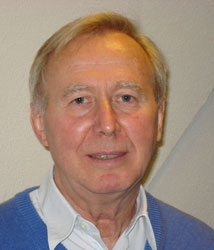
 Zoom
Zoom